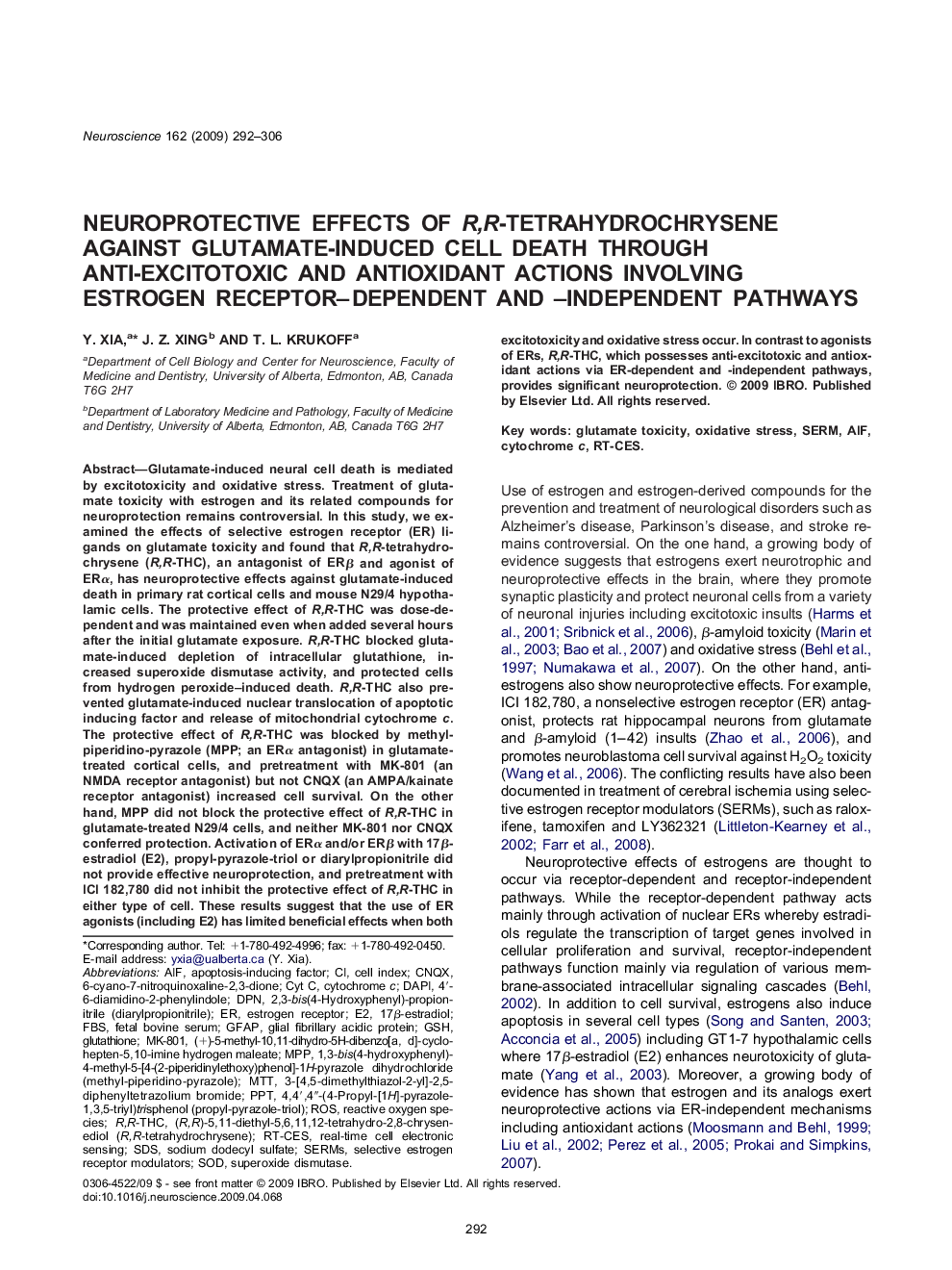| کد مقاله | کد نشریه | سال انتشار | مقاله انگلیسی | نسخه تمام متن |
|---|---|---|---|---|
| 4340159 | 1295786 | 2009 | 15 صفحه PDF | دانلود رایگان |

Glutamate-induced neural cell death is mediated by excitotoxicity and oxidative stress. Treatment of glutamate toxicity with estrogen and its related compounds for neuroprotection remains controversial. In this study, we examined the effects of selective estrogen receptor (ER) ligands on glutamate toxicity and found that R,R-tetrahydrochrysene (R,R-THC), an antagonist of ERβ and agonist of ERα, has neuroprotective effects against glutamate-induced death in primary rat cortical cells and mouse N29/4 hypothalamic cells. The protective effect of R,R-THC was dose-dependent and was maintained even when added several hours after the initial glutamate exposure. R,R-THC blocked glutamate-induced depletion of intracellular glutathione, increased superoxide dismutase activity, and protected cells from hydrogen peroxide–induced death. R,R-THC also prevented glutamate-induced nuclear translocation of apoptotic inducing factor and release of mitochondrial cytochrome c. The protective effect of R,R-THC was blocked by methyl-piperidino-pyrazole (MPP; an ERα antagonist) in glutamate-treated cortical cells, and pretreatment with MK-801 (an NMDA receptor antagonist) but not CNQX (an AMPA/kainate receptor antagonist) increased cell survival. On the other hand, MPP did not block the protective effect of R,R-THC in glutamate-treated N29/4 cells, and neither MK-801 nor CNQX conferred protection. Activation of ERα and/or ERβ with 17β-estradiol (E2), propyl-pyrazole-triol or diarylpropionitrile did not provide effective neuroprotection, and pretreatment with ICI 182,780 did not inhibit the protective effect of R,R-THC in either type of cell. These results suggest that the use of ER agonists (including E2) has limited beneficial effects when both excitotoxicity and oxidative stress occur. In contrast to agonists of ERs, R,R-THC, which possesses anti-excitotoxic and antioxidant actions via ER-dependent and -independent pathways, provides significant neuroprotection.
Journal: Neuroscience - Volume 162, Issue 2, 18 August 2009, Pages 292–306